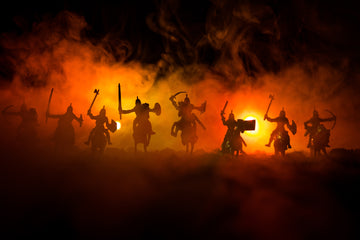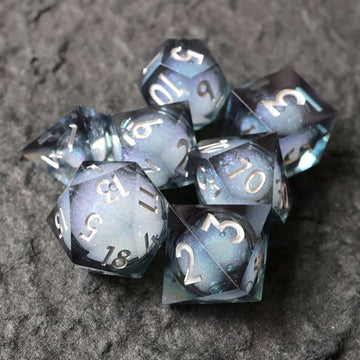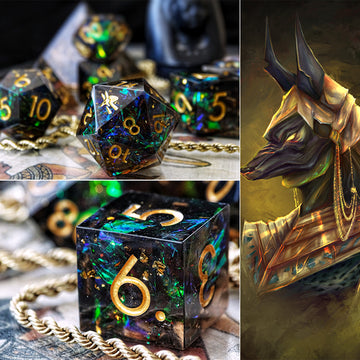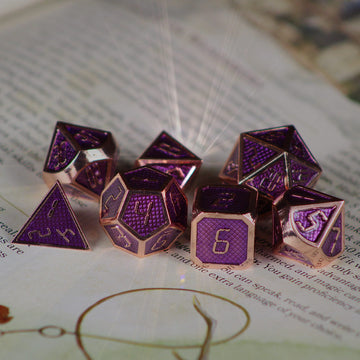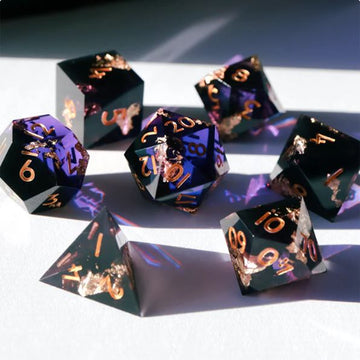Simple and memorable skirmish rules that allow your players to lead "warbands" of NPCs in raids and small combat encounters.
By Riley Rath
Table of Contents
- Defining "Skirmish" and "Small Scale Battle"
- Commanding NPCs Lets Certain Player Characters shine
- Goals for D&D 5e Skirmish Rules
- The Basic Rules for Small-Scale DND Battles
- Reminder: D&D Skirmishes Are All About Story!
- The "Advanced" Rules: Modifiers
Terrain
Weapons
Fighting Skill
Orders
"Heroic Moments"
- Spell Casters Skirmisher Rules
- D&D 5e Skirmisher FAQ
- Conclusion
- Extra: FREE NPC Warband Modifiers Cheat Sheet
"Roll for initiative."
The iconic Dungeons and Dragons phrase means only one thing: the beginning of a 5e combat encounter. And this happens a lot. After all, against pure evil from magical realms, violence is the best answer.
So much so that combat is considered to be the dominant pillar of DND 5e. The majority of the rules and mechanics are devoted to making combat balanced, strategic, and most importantly… fun!
But the DND 5e combat encounter rules are also limited.
They are designed for a party of 4 - 6 players against a big, scary monster… or only a handful of NPCs, but no more. The Challenge Rating (CR) is balanced when creating "shootouts"… like in western movies: a handful of heroes against another handful of bad guys… and the last humanoid standing wins.
But DND is also a role-playing game… players not only fight, but also explore a world and tell a story together. And sometimes the "monster vs player shootout" doesn't fit the needs of a story.
Don't worry… I'm not advocating turning 5e into something it's not: a miniature war game involving legions and massive armies. If your friends want that, they are better off playing something like Warhammer 40k.
What I am talking about are small-scale battles… raids and skirmishes… D&D combat encounters involving dozens, rather than hundreds or thousands, of NPCs… in which your players take a meaningful, exciting role.
D&D 5e needs skirmish rules for small battles involving NPCs.
Because the truth is this:
Sometimes players don't want to just raid a dungeon or slay a dragon.
Sometimes they want to fight on the front lines, surrounded by ranks of warriors looking to the players to lead them to victory. And in those circumstances, players are going to be disappointed if all the NPCs are controlled by the DM.
They don't want the NPCs to be a stage prop in the background... they want them to be tools to play with at their disposal.
These skirmish rules are designed to turn the dream of running a small-scale "battle" combat encounter into a reality.
It changes no standard 5e rules and just adds some memorable rules that can be learned quickly. The rules can also increase in complexity as the table grows used to them.
After all... players don't just listen to you explain the battle... but get to take part in the battle.
Defining "Skirmish" and "Small Scale Battle"

You might be wondering, "What do you mean by 'small scale battle'?"
As I mentioned above, I'm not talking about pitched battles or encounter battles… D&D heroes are not generals commanding divisions of troops from a hilltop! I'm talking more about skirmishes… raids… or warbands fighting one another.
These are small, violent, often unplanned encounters between low level military ranks or noble warriors. I am calling these "skirmishes" and the groups of NPC combatants "warbands." However, note that these are NOT rules for PvP combat... they are still fighting against the enemies presented by the Dungeon Master.
Here are some explains that I think will clear things up:
- In Game of Thrones, the Wildlings have gathered from all across the north and are making their assault on The Wall. Some are even assaulting Castle Black from the rear. It is a strange siege, involving battering a gate, assaulting a wooden fort, and climbing the ice wall. Jon Snow commands men along the wall while Allister Throne leads the resistance back on the ground. In other words, the "heroes" (though not sure there are any heroes in GOT…) are split up, waging small-scale battles independently in the midst of a larger battle.
- In Centurion, Quintus is stationed along the frontier of the Roman Empire in Britain. He is standing watching along the wooden ramparts when the fort is ambushed by Pict warriors. He rushes to wake his soldiers and he fights off the Picts leaping over the walls and slaughtering his men. He attempts to order a rider to race out of the fort, but it is all in vain. Before long, the Romans are dead and Quintus is taken prisoner.
- In The Lord of the Rings: The Two Towers the royal court and citizens of Edoras are making their way to Helms Deep, believing it to be their only hope against the armies of Isengard. But in transit, they are intercepted by vicious worg riders. King Theoden and the Fellowship lead dozens of royal guards in a cavalry battle that, admittedly, wasn't in the books, but made a damn good scene.
All of these skirmish examples share four things:
1) They were small scale battles (or small sections of larger battles).
2) They involved heroes commanding others (or the potential to command others)…
3) …While the heroes also were fighting the enemy.
4) The decisions of the heroes impact the battle.
That is our goal: to create fun, easy mechanics to help DMs and players create interesting combat encounters filled with exciting story-telling moments.
Furthermore, they also present great character and role-playing moments.
Commanding NPCs Lets Certain Player Characters Shine

Before we get to our homebrew DND 5e Skirmish Rules… I want to talk about role-playing:
Some leaders are missing moments to role-play in combat.
Lots of different D&D character classes and backgrounds explicitly center around having leadership capabilities. And while sometimes these are considered and included in the class mechanics, often they are just that: mechanics.
What is missing are chances for players to role-play leadership… to have others depend on you as you organize an attack/defense. Or better yet… to FEEL like a leader in the heat of battle as enemies fire upon you in anger.
Because let's face it: it doesn't matter if one character is a "vet from the rebellions" and another is a "feywild minstrel"… at the table, one player is NOT going to lead another player.
DND is "cooperative storytelling"; DMs give agency to players to make decisions, and together they work to tell a story as they play the game. For a single player to dominate a session by leading goes against everything that makes the game special.
Our homebrew "Warbands" are groups of NPCs that are lead and controlled by the players in a 5e combat encounter.
But for the DM to give the player agency to command NPCs? For the lives of those NPCs to depend on their battlefield prowess? That is a whole other thing entirely!
And how cool does it sound for a player to role-play grabbing a banner, giving out an order, and charging a group of enemies, bravely staring death in the face and inspiring their warband to victory?
That's right… REALLY COOL.
With that, let's get to the goals!
Loving this post? We try to write awesome stuff like this twice a month.
Sign up so you never miss out!
Goals for DND 5e Skirmish Rules

As demonstrated above, there are some holes in the current DND 5e combat system that we can fill: too limited in size and scope, no NPC involvement, and player characters rarely get to demonstrate leadership skills.
But we are not adding something just for the sake of adding something.
And we are not trying to "fix what isn't broken."
We are just trying to add new flavor to combat.
Therefore, these rules are ADDED to the standard Dungeons and Dragons Fifth Edition rules. But that is not all… these rules need to also be four things for them to be a solid homebrew everyone should implement in their game.
The four goals are that these rules be 1) simple, 2) memorable, 3) impactful, and 4) fun.
- If DND 5e is anything compared to Pathfinder and 4e… it is SIMPLE. No homebrew rules and modifications are workable if they are not simple; add too much and it ceases to be DND.
- Furthermore, most DMs and players do not want to stop the game for 30 minutes to learn the rules. They want to play DND, not stop playing DND to play a mini-game that is essentially another board game. So the rules have to be MEMORABLE.
- DND 5e is at its best when players have agency… and that is not different for leading these warbands. Their tactical decisions and rolls have to IMPACT the battlefield in meaningful ways.
- And finally, they have to be FUN (duh).
If these warband raid rules are these four things, then they will create interesting skirmish encounters that DMs will delight in designing for their tables.
With that, on to the rules!
The Basic Rules for Small-Scale DND Battles

Knowing they must be simple, memorable, impactful, and fun, here are the basic rules for 5e "Raids":
A) In these DND 5e "Raid" rules, a NPC warband is a small group of NPCs.
Think between 5 - 20 NPCs.
B) Warbands do not have their own initiative… they move with a player character's action.
At any point during their turn, players can choose to resolve their warband's action or attack.
C) Players are given a special additional action… an "order" during their turn (along with their normal action, reaction, and bonus action).
D) They can take that action ("give that order") at any point during their turn.
E) That special order can only be used for the specific warband under their command.
Basically: when a player goes, their warband goes. The only other major difference is what a warband rolls.
F) Warbands roll a single d8 when determining attacks.
This might be the one confusing area. Your warband does NOT roll a d20… this is so the bonuses can make a bigger impact (next section).
G) Warbands fighting one another do not roll to "Hit." They roll against one another, the higher roll winning the fight.
Rolling here follows Risk rules: enemy warbands roll against one another, tie goes to the defender.
H) Warbands do not roll for damage. If the attacker wins the fight, they do 1 pt of damage.
In volleyball and baseball, only the team on offense can score. In a similar way, only the attackers can do damage and only if they win the fight.
If the attacker gets 5 or more than the defender, then they do 2pts of damage.
I) Warbands can only be commanded if the player character is within 30ft... 60ft if they are on a mount.
DMs can play with this number A LOT... even doubling the range... and give a lot of leeway based on the moment. But the idea is that the NPCs have to be able to see/hear the player character.
J) Enemy warbands move with their own leader. Enemy warbands without a leader of their own move at initiative count 20 and 12.
In summary:
-
Players command a single NPC warband
-
The NPCs move and act as one unit and with their player character (or at initiative count 20 or 12)
-
The NPC unit rolls a single d8 against another warband
-
NPC warbands have no stats… they have 6 health points.
AND THAT'S IT.
If you just wanted to involve players a little more… add a little more luck and stakes… you could just implement these simple rules. It would involve more role-play and a lot of "rule of cool"… but it would be fun nonetheless!
And maybe, when you implement this for the first time, you just stick with the basic rules and let the players get the hang of it.
D&D Skirmishes Are All About Story

Some people may look at all those super simple rules and ask: "What's the point?"
Or: "Wow... just rolling d8s? That sounds... boring."
And I get it... it is VERY simple...
Even with the second half of this blog post being "advanced" rules full of strategy, it is still nothing like that of a true tabletop war-game like Warhammer.
So why play it?
Because while they are new combat mechanics, the 5e Skirmish rules are all about STORY MOMENTS.
It's about creating an epic scene that will give your players goosebumps. A new flavor of "unforgettable campaign moment" they will use to convince their friends to give D&D a try.
Imagine...
What if two wizards are dueling from opposing towers as their warbands fight each other in the courtyard?
Or PC barbarians are clashing axes as their personal guard swarms around them, creating a chaotic pit of steel?
Or a PC knight, mounted on horseback, is galloping into the jaws of the hobgoblins and their direwolf mounts?
THESE are the situations where the 5e skirmish rules work PERFECTLY.
And in light of those scenarios... here is my secret for making sure hat these rules go smoothly:
Have players fight commanders and warbands fight warbands.
If you let each warband have a commander, then they still get to use their normal combat abilities AND enjoy commanding an awesome skirmish.
At the end of this post are some Frequently Asked Questions, and they deal with rules for when a hero wants to fight a warband, or vice versa.
But our goal isn't to turn Dungeons and Dragons into something it isn't...
It's to create fun, easy mechanics for PARTICULAR scenes.
Scenes that help some DMs and players create similar, exciting story-telling moments.
Paladins and Barbarians? Check out our other blog posts, or click here and we'll alert you every time we post something new.
The "Advanced" Rules: Modifiers
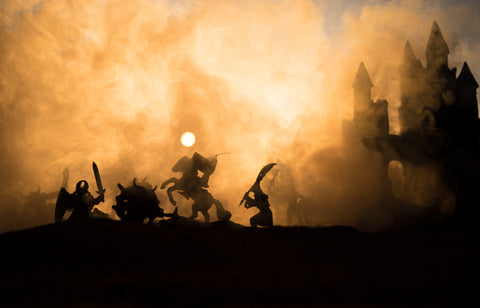
Now that the basics are established, there is one more element to letting players lead NPCs in "raids"… modifiers! And there is one, major rule that you have to know when resolving warband combat encounters:
Modifiers stack… roll and add/subtract.
Every time a warband skirmishes with another warband, each side adds up all the relevant modifiers into their roll. Modifiers stack on top of each other, so you always want your warband to have more positive modifiers. Whoever has the higher roll wins!
There are five different modifiers: 1) terrain, 2) weapons, 3) fighting skill, 4) orders, and 5) "heroic."
One after another, it might get a little complex. But don't worry: there is a cheat sheet at the end of the blog post!
1) Terrain

Just like in real war, the terrain you are fighting on has a massive impact on whether or not you lose a fight. 5e has lots of environments that can impact an adventurer's movement. But for simplicity's sake, there are four ways terrain can modify a roll:
- If the NPC warband is engaged in combat in difficult terrain, their roll takes a -1 penalty.
- If the NPC warband is fighting in MELEE combat with high ground, their roll takes a +2 bonus (no penalty for having the low ground). This bonus does not apply to ranged weapons.
- If the light is dim, or dust and smoke is obscuring vision: -1
- If they are fighting in utter darkness, or a spell is severely hampering their ability to fight: -1 (see section "Spell Casting Skirmisher Rules")
2) Weapons
Certain equipment is sure going to give your warband some bonuses. That said… for simplicity's sake, we aren't going to go through every piece of armor and weapon in the PBH. Here are some simple suggestions:
- Shield: +1 when the NPCs are ordered to defend or being fired upon with ranged attacks.
- Armor: +1 to all rolls
- Horse:
---- - When moving in a single direction for entire turn:
------- - +1 if attacking an enemy in formation
------- - +2 if attacking an enemy out of formation
---- - -1 when defending against bows
- Bow/Crossbow: +2 when attacking an enemy out of formation and/or does not have shields
- Spears/Pikes: +1 when your warband is charging/when the enemy warband is charging
3) Fighting Skill

Some warbands are composed of the normal city guard and resistance fighters. But others are full of experienced warriors. For veterans from the frontier, mounted knights, and savage mercenaries… battle is a way of life.
But not every group fights the same. And just because you have experience doesn't mean you have the advantage (just ask the French at Agincourt).
Below are some fighting skills you can assign your NPC warbands. I have put historical equivalents in parenthesis for clarity's sake. I would strongly suggest only allowing each NPC warband one fighting skill.
- "Rabble" (Gaulic/Viking): +2 when out of formation
- "Cavalry" (Mounted Frankish Knight): +1 to all rolls if mounted
- "Shield Wall" (Roman legions): +2 when defending in formation
- "Archer" (English longbowmen): +1 when firing without moving
- "Drilled" (Greek phalanx): +1 attacking in formation
- "Scout" (Apache/Ninja): +2 when attacking from hiding
- "Bodyguard" (Samurai): +1 when within 15ft of the player character
- "Peasant" (people in clothes with pitchforks)… -1 in all rolls.
4) Orders
This is the moment player characters get to have the most impact and agency. And the moment where characters with leadership experience can finally shine!
As stated in the basic rules, players only have one "NPC action" that they can use every round of combat. But there are two types of orders: attacking and defending orders.
- If you use an attacking order, you give the order on your turn.
- If you use the defending order, you can use your Reaction and the warband gains the benefit of your order.
Which means… players have to read the battlefield and be strategic as to when they use their order each round.
DMs can role-play the orders however they want:
- They can happen automatically and in-character, with players shouting across the table in fury… or just stoically as they gaze at the battlefield.
- Alternatively, DMs can make players roll a saving throw of the DMs choice against a DC of 10, 15, or 19. Theoretically, any ability can be used if the player can make a good case for it.
- Or… if the DM is a pragmatist/literalist… he can insist players roll a Percetion check first to "read" the battle before they can give the perfect order. After all, while players have a literal birds eye view of the battle, the character is surrounded by blood and steel!
- DM's can also take MORALE into account. If a warband is facing something terrifying or has been reduced to less than half strength, a DM can impose a -1 penalty to their roll.
A player can give any order they want, but only certain orders can give bonuses to the warband's roll. And some orders require the warband to be in formation to be effective. A formation can be "broken" based on what the player character does or what happens in the battle… at the DMs discretion.
NPC Warband IN Formation

- "Advance": +2 to continue attacking an enemy warband you are already engaged with
- "Defend" (REACTION): +2 to roll when defending (brace for the attack from another warband).
- "Maneuver": warband uses their action to moves across the battlefield at double speed (no bonus).
- "Push": +2 to roll when attacking, but if you win, instead of doing damage, you move the enemy 10ft.
- "Take Cover" (REACTION): +1 to roll when being fired upon by ranged weapons.
- "Charge": +1 when you charge the enemy line.
- "Hide": +2 on surprise attack (can only be done if the enemy is not aware you are there).
- "Ordered Retreat": +3 to roll BUT they must use the defend action and use all their movement speed to move away for 4 rounds.
NPC Warband OUT OF Formation
- "Attack": +1 when attacking
- "Reform" (regather into formation): take your turn… no bonus
- "Charge": No bonus
- "Frenzy": Fight for your life! Add a +2 to your roll this turn... -1 next turn.
- "Hide": +2 to your warband's next attack if the enemy cannot see them or has not seen them.
- "Flee": warband uses action to move double their movement speed (unable to attack).
5) "Heroic" Moments
This is for those moments where a player character does something so badass it immediately inspires their allies and disheartens their enemies. They are "free" actions, though they can only be used a limited amount of times.
There are three types of heroic moments:
- Player lands a critical hit on the enemy commander: warband immediately gains a +1 to their roll for that turn.
- If a player gave a rousing speech before battle, they may choose one action during the skirmish to "remind" their warband, giving them +1 to any roll at one point during battle.
- "Rally": The player character may let out a war cry or hoist a banner... giving the warband +1 to their roll for that turn (can only be used once).
In Summary…
I know, I know… that is A LOT of modifiers… and I am sure you could think of many more! But if you are imagining a hell scenario where you have to explain these to your players every time each one of them takes a turn…
But don't worry: I have condensed it all in a cheat sheet at the end of the blog post!
If each player has their own, it should not slow down combat too much. Many bonuses are chosen by the player before the "raid" starts, and the other ones should be mostly obvious just from comparing the cheat sheet to the combat taking place on the battle map.
Spellcaster Skirmisher Rules

D&D 5e put a lot of effort into its combat rules to make sure it is as fun and balanced as possible. If role-playing is more of an art, combat is more of a science.
But whatever art they put into martial classes... they had to triple for spells and spellcasting.
Spells are special because they "break" the normal rules of D&D... allowing your character to do something magnificent. We want to allow the same feeling when players are controlling warbands.
Unfortunately, due to the types of encounters D&D 5e is designed for, using certain spells when skirmishing would be, like, WAY OP.
Can you imagine casting Wall of Fire or Fireball right in the middle of an enemy formation?
It would not only render all tactics irrelevant... but would also be a toasty, crispy massacre.
In light of this, additional rules are needed for when the player character inevitably turns their spellcasting devastation away from the enemy commander and onto the warband itself.
First off... No Spellcasters in Warbands.
For obvious reasons, spellcasters cannot be in warbands. Maybe myself or someone else will add additional rules for spellcasting warbands, but for now... no. Just, no. They always exist as individuals with their own place in initiative.
Individual Damage Spells
For an individual spell to do damage to a warband, it must be 2nd level or higher. If the enemy warband is not in combat with an allied warband, you lower the enemy warband's HP by 1. If they are in combat, hen you roll a d4... odd numbers hit one of your allies, even numbers hit one of your enemies.
"Area of Effect" Spells
As stated above, AOE spells would turn these rules into easy, stupid, regular ol' combat... so we want to regulate them a bit. However, they should be more useful and powerful than an attack that targets a single combatant.
So... rather than devastating everyone in their range... AOE spells do 2pts of damage to a formation and an additional point of damage for every spell 5th level and above.
Healing Spells
The healing spell must heal 5 or more people, and must be level 3 or higher. A healing spell is cast, the player character does not need to roll... it automatically heals the warband for 1pt. If the healing spell is level 6 or higher, it heals for 2pts.
Even concentration healing spells only last for a single round.
Buff/Condition Spells
If the spell grants advantage on a skill check, the spell lasts a single round and gives +1 to the warband's roll. They cannot cast the same spell twice in a combat encounter.
Concentration Spells
Just like AOE, some concentration spells could end a skirmish before it even begins... every single time. And nothing pisses off a Paladin more than having the wizard steal their moment of glory.
So concentration spells need to be tweaked a bit:
- A player targeting a warband with a concentration spell cannot target the same warband with any other spell
- If the spell buffs, it will give a -1 or a +1 to the targeted warband's roll
- If the spell does damage, it does -1pt to the warband's HP (even if it is a higher level AOE spell)
Saving Throws
This is the trickiest part... and, unfortunately, I do not have a straightforward answer.
With some spells, the warband should have a huge advantage in saves... with other spells, a huge disadvantage. Some spells would be almost useless against a warband in formation... other spells should be.
As a DM, I usually take the context into consideration and add either 3, 5, or 7 to the roll.
If the warband passes the saving throw, they take no damage from the spell.
Schools of Magic
- Transmutation: A warband is immune to anything that would change its shape
- Enchantment: +9 save to any roll for enchanting an enemy warband, and they have advantage on their save.
- Necromancy: No... you cannot raise warband soldiers that died in the same combat encounter.
- Conjuration (animals, spirits): Functions as another warband on initiative count of 20 or 12.
- Illusion: A Warband has advantage on their save to spot illusions
We just might have the perfect dice for your spellcaster.
Click here (and scroll down) to discover our class-based dice.
D&D 5e Skirmisher FAQ

Now, this is a new idea, so none of these questions have actually been "frequently asked," but these are the questions I imagine players would ask as they consider adding these rules to their campaign.
Q: What if the player character wants to fight one of the warbands on their own?
A: If a player wants to fight a group of NPCs, you transition to the mob rules found in the DMG. They do not gain any benefits. Personally, if your players are at higher levels, I would double the damage of the mob. Level 8 players aren't going to fear 5 CR ½ orcs.

Q: Can warbands give the help action to player characters?
A: No help action. Both for simplicity's sake and because it is a chaotic battle. DMs and players are encouraged to add that into their descriptions, though.
Q: What about opportunity attacks?
A: Battle is too chaotic to seize the moment like that… no opportunity attacks.
Q: What if one warband is smaller than the other?
A: A warband of a noticeably smaller size starts with only 3 health points. Their smaller size does not impact their roll.
Q: What if one warband is significantly larger than another?
A: A much larger warband increases their health points by 2, 4, or 8. Their larger size does not impact their roll.
Q: If the player character drops and loses their weapon, is it still a free action to pick it up again?
A: No… the chaos of battle would make this much, much more difficult. It takes their reaction or action to pick up a weapon they have dropped.
Q: What about flanking?
A: Flanking is VERY powerful in battle. If you position your warband to flank the enemy from the side or the rear, then you add a +2 to your roll. Flanking from the rear is a +4 to attack.
Q: What if two warbands attack a single warband?
A: Each attack is rolled separately. The warband that is outnumbered subtracts 1 from its rolls. As always, the commander can only order them to "Defend" with their reaction once.
Q: Difficult terrain gives a -1 penalty to the attack… does it also reduce their speed by 1/2?
A: At DM's discretion. The penalty to the roll takes into account stuff like certain members of the warband falling and thus giving their compatriots out to dry. But it makes sense that a heavily muddy terrain, or a fortified area intended to slow an enemy, would actually slow the enemy.
Q: What if the player character leading a NPC warband in a raid is making death saves before the NPCs all die?
A: If the warband is aware their leader is dead, they defend the player's body and make medicine checks or flee the battle.
Q: Can a player command multiple warbands?
A: Up to the DM, but remember it's supposed to be SIMPLE.
Q: What kind of player characters can command warbands?
A: Once again, this is up to the DM... HOWEVER... it doesn't really make that much sense for a silly bard to command a platoon as well as a fighter that is a seasoned military veteran. It makes a lot of sense that a DM may prevent certain classes from making certain commands, or have them first roll a skill check to determine if they even see the battlefield clearly. Maybe they even have to roll persuasion/intimidation for the order to even be followed!
Q: Can a hero help their warband attack the enemy warband?
A: If the hero wants to use the 5e skirmish rules version of the "help action," the warband gets a +1 to their roll.
Q: Can a warband help a hero attack the enemy commander?
A: Yes... if the PC is a martial class, then hey get an extra attack. If the PC is a spellcaster, then they make their attack roll at advantage/the saving throw is at disadvantage.
Conclusion

These D&D 5e skirmish rules bring a new, simple, interesting, and fun style of DND 5e combat to encounters. They are designed with one hope in mind:
That as a table, you would all experience some amazing story moments together.
DMs are presented with whole new combat encounter opportunities. You can design environments and see how your players respond. You can give the warbands evil and interesting leaders for your players to fight as the battle ranges around them.
For players leading NPCs in skirmishes, this adds a new dynamic currently missing from DND 5e. There is a new strategic element added to their turn, as they can either lead the NPC warband safely or maneuver them to their own personal advantage. It is also a chance to further integrate role-playing into the combat encounter to create unforgettable story moments.
There is one downside… it miiiiiiight make combat encounters just a teensy bit slower…
But trust me... it's worth it :-)
Loved this blog? We write several a month.
And we’d like to let you know.
Enter your email here to get our simple, not-annoying newsletter.
EXTRA: NPC Warband Modifiers Cheat Sheet
All the rules and stats in one handy place! In the name of easy access and use, we uploaded our cheat sheet as a free download. Click here to download yours.
We don't create homebrew content
For example...
Why Barbarians Aren't Boring
and
How Bards Can Be More Than Musicians
Check them out :-)
Riley Rath

Riley is a freelance copywriter, content writer, and marketer based out of Spokane, WA. He is thankful to have the opportunity to combine his passion for imaginative role-playing to help FLGS, tabletop, board game, and D&D related businesses communicate their distinct value to players everywhere. When not playing or writing about board games or DnD, he is busy hiking, cooking, and gardening... very hobbit-like for a 6'4" dude.
Use this link if you are interested in his TTRPG and board game marketing assistance!


